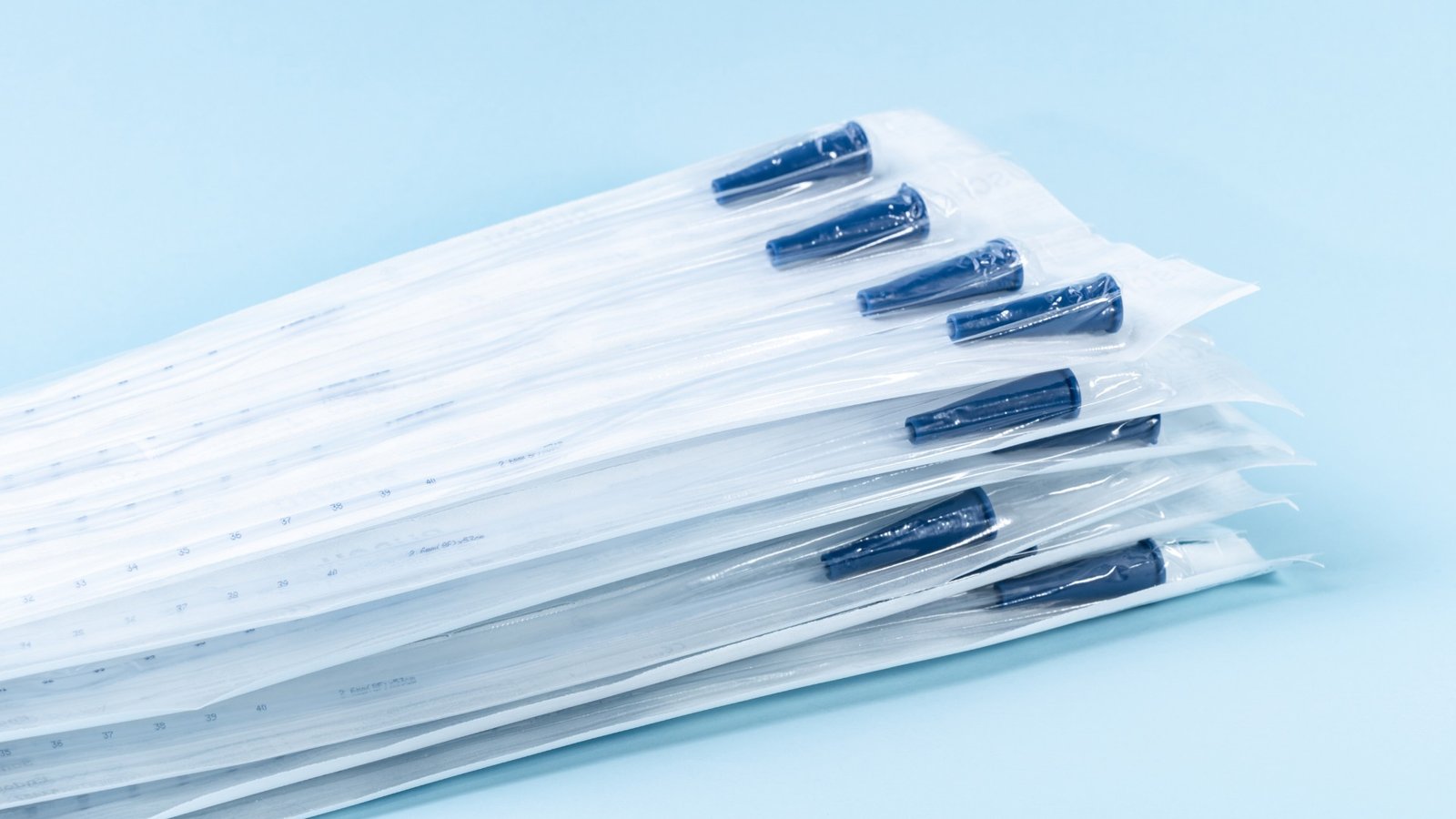In this article, we are going to cover what Intermittent Self Catheterization is and how it benefits individuals who void urine on their own. Intermittent Self Catheterization helps people with Spina Bifida manage bladder dysfunction, which causes issues in emptying the bladder.
Introduction to Clean Intermittent Self Catheterization (CISC)
Clean Intermittent Self Catheterization (CISC) closely mimics natural urination and is an excellent alternative. Visit our YouTube section to watch animations that explain the CISC procedure, download instructions for Intermittent Self Catheterization, and more. For comprehensive information on self-catheterization and how the body functions, this is your go-to resource for Intermittent Self Catheterization!
How Intermittent Catheterization Puts You in Control
Regardless of severity, bladder problems can make it hard to go about our day-to-day lives with confidence. Clean Intermittent Self Catheterization (CISC) empowers you by giving you control over your bladder management. It allows you to empty your bladder at your convenience – just like natural peeing. It reduces the risk of infections and complications associated with urine retention.
Intermittent self catheterization is a powerful tool that empowers individuals to take charge of their bladder health and offers significant benefits for personal hygiene. Through Intermittent self catheterization, maintaining hygiene becomes easier, allowing individuals to feel more confident in social situations. Intermittent self-catheterization not only boosts independence but also enhances your ability to engage in social activities without the anxiety of incontinence. By practicing Intermittent self catheterization, you can reduce the risk of infections and discomfort, ultimately leading to a more satisfying intimate life.
CISC can enhance your independence and improve your quality of life by providing a reliable and discreet way to manage urinary retention. With proper technique and regular practice, CISC becomes a routine part of your day, helping you maintain comfort and confidence. By taking charge of your bladder health, you can lead a more active and fulfilling life, which is more important than it may sound. With good single-use catheters like Polymed’s Nel Cath and Romson’s Nel Cath, you can catheterize quickly, comfortably, and with minimal fuss. No one has to know besides you.
Utilizing intermittent self catheterization effectively can prevent urinary tract infections (UTIs) and offer significant relief from the discomfort of urinary retention. Whether you are learning about intermittent self-catheterization for the first time or have experience, understanding its advantages is crucial.
Socially, CISC enhances your independence and confidence. By managing your bladder health discreetly, you can participate in social activities without the worry of incontinence (leakage) or the need for frequent bathroom breaks. This freedom can improve your overall quality of life and social interactions.
Sexually, Clean Intermittent Self Catheterization (CISC) can positively impact your intimate relationships. By maintaining good bladder health, you reduce the risk of infections and discomfort that can interfere with sexual activity and increase the chances for better sexual functions. Feeling in control of your body can also boost your self-esteem and contribute to a healthier, more satisfying sex life. Disposable catheters give you freedom because there’s no permanent device to be embarrassed about or that gets in the way.
Better Control Over Your Bladder Leads to Better Quality of Life
If you have sufficient hand control and coordination to handle a catheter, self-catheterization offers a safe and convenient method to empty your bladder, regardless of your condition. Emptying your bladder through Clean Intermittent Self Catheterization (CISC) offers significant medical benefits. It helps prevent urinary tract infections (UTIs) and kidney damage by ensuring complete bladder emptying. Regular CISC can also reduce the risk of bladder stones and other complications associated with urinary retention. Better control over your bladder leads to a better quality of life.
Intermittent Self-Catheterization and Its Advantages
- Minus the risk of a few catheter-induced UTIs, it’s easy and safe. It may feel a little weird at first, but it does not hurt for most people. However, if you do feel pain, it is temporary and can be tackled through pain medications.
- It empties the bladder properly and prevents Vesicoureteral reflux, preventing the backflow of urine that could damage the kidneys.
- It eliminates the risk of UTIs caused by residual urine.
- Because it empties properly, there’s no risk of urine leakage.
- You pick, and choose, the time and place to empty your bladder.
- It could help you get a proper full night’s sleep.
- Improved quality of life! You don’t have to worry about embarrassing leaks, or how you’ll manage outside the home, camping and sleepovers etc.
- It is discreet, supports your social and love life, and promotes sexual health.
Together We Can
Starting Clean Intermittent Self Catheterization (CISC) on the right foot is crucial for both, your physical health and psychological well-being. Good support is extremely, valuable along with a catheter that is safe, discreet, and easy to handle.
Each person has a unique condition, so there’s no single way to learn catheterization. You might feel uneasy when starting but don’t worry. Most people overcome that feeling after trying it a few times. At Sasha, we guide and teach individuals about catheterization and everything that comes with it. Our founder, who took years to adopt it, understands the physical pain and fear of UTIs, as well as the ongoing use of antibiotics that often accompany it. We will cover Clean Intermittent Self Catheterization (CISC) in detail in another article.
Please Note
The information provided on our website is not intended as medical advice for any individual. Since specific cases may differ from the general information presented, SASHA recommends consulting a qualified medical or other professional for personalized advice.
About the Author
Raul/DJ Vivek
Meet Vivek Bharadwaj, a remarkable individual who has defied the odds and soared to new heights despite living with Spina Bifida. As the founder of the Sasha Foundation, Vivek tirelessly advocates for others facing similar challenges. His unwavering commitment to support, awareness, and empowerment had made a lasting impact on the Spina Bifida community.
FAQ
What is clean intermittent self-catheterization used for?
Clean Intermittent Self-catheterization (ISC) will help you empty your bladder completely and regularly.
Is it painful to self-catheterize?
Yes, in the beginning, it may be a little uncomfortable or painful but in time, with practice, this fades out.
What are the side effects of intermittent self-catheterization?
The most frequent complication of IC is a catheter-associated urinary tract infection (UTI). Other complications can include urethral/scrotal events including bleeding, urethritis, stricture, the creation of a false passage, and epididymitis.
Who needs to self-catheterize?
You may need a catheter because you have urinary incontinence (leakage), urinary retention (not being able to urinate), prostate problems, or surgery that made it necessary.
What can happen if I stop intermittent self-catheterization?
Urinary tract infections (UTIs). Bladder damage. Kidney damage that will bring you to a dialysis table.
What are the benefits of intermittent self-catheterization?
There are two main reasons for catheterizing yourself. One is to empty your bladder on a regular schedule and to keep yourself dry. Another reason is to keep your bladder from getting over-distended. This keeps your kidneys healthy and prevents infections.
What are the four things needed for intermittent self-catheterization?
You need a disposable catheter, Lidocaine Jelly 2%, soap and free-flowing tap water.
What is the difference between an indwelling catheter and an intermittent catheter?
Indwelling Catheter: Inserted either through the urethra or the abdominal wall into the bladder and left in place for a period of time.
Intermittent Catheter: Inserted through the urethra into the bladder to empty it, then removed, practised several times a day.
What is a Foley catheter?
A foley catheter remains in place continuously and is changed regularly, as required, mostly by healthcare providers. A foley catheter is connected to a urine bag where the urine collects.
What is an intermittent catheter?
An intermittent catheter is when a new catheter is inserted each time you need to drain urine.
What size catheter is used for children (paediatric)?
The average catheter size used by children (paediatric) ranges between 6FR and 10FR.
What size catheter is used for a man?
The average catheter size used by adult men is between 12FR to 16FR. Most men use 14FR catheters.
What size catheter is used for a woman?
The average catheter size used by adult women ranges from 10FR to 12FR. Most women use 12FR catheters.
What is the difference between the French (FR) size of a catheter and its length?
Intermittent catheters and Foley catheters have French sizes according to the diameter, it has nothing to do with the length.
What are the different Intermittent Catheter lengths?
Intermittent catheters are manufactured in three lengths. Standard female-length catheters average 7-10 inches. Standard male-length catheters average 15-18 inches. Paediatric-length catheters average 11-13 inches.
Does removing pubic hair in teenagers and adults who practice intermittent self-catheterization, beneficial?
Yes, maintaining hair-free areas can improve hygiene and help prevent urinary tract infections (UTIs). Maintaining hygiene becomes particularly challenging for those with frequent accidents due to bowel incontinence.
Should I wash my hands before intermittent self-catheterization?
Yes, you should wash your hands thoroughly before catheterization.
Do I need to use hand sanitiser before intermittent self-catheterization?
You don’t need to sanitize your hands if you can wash them with soap and tap water, and only touch your catheterization gear and organ. But if you lack soap and water or need to touch other objects after washing, you must sanitize your hands before catheterization.
Do I need to clean my genitals with Betadine or antiseptic towelette, every time before I catheterise?
No. If you are bathing daily and maintaining good levels of hygiene in your pubic area you don’t need to clean your genitals before every catheter.
Should I wash and reuse a urinary catheter?
No, you should not. It will lead to a high number of UTIs. However, there are situations where patients cannot afford a new catheter each time it needs to be changed. In our observation by reusing catheters, you end up spending the same amount, if not more, in treating UTIs. Reusing leads to more doctor visits, more urine cultures, more antibiotics and suffering on top of it.
Can I use a Feeding Tube (FT) instead of an intermittent catheter?
No, you should not. In India, Feeding Tubes are usually suggested when you are a baby or just starting catheterization. You should discard this wrong practice as soon as possible.
What is the best position to self-catheterize?
This varies from case to case. Stand in front of or sit on a toilet. You can also insert your catheter in a private room using a container to collect your urine.
How to lubricate an intermittent catheter?
You can use Lidocaine Jelly 2% to lubricate before and during insertion, of a catheter.
How much Lidocaine Jelly should I use?
You should use Lidocaine Jelly in good quantity. A very well-lubricated urethra and catheter lead to fewer complications.
What are hydrophilic catheters and do I need them?
Hydrophilic catheters are polymer-coated self-lubricating ready-to-use right out of the package catheters. You don’t necessarily need them, but it would be nice to have them. They eliminate the usage of jelly and are on the expensive side. No company in India is manufacturing these.
How many times a day should you self-catheterize?
Usually, a good time is to catheterise every 2 ½ hours to 3 ½ hours. This varies from person to person as it depends on their bladder capacity. This is also connected to how much fluid you are taking.
When to stop intermittent self-catheterization?
Never, in a Spina Bifida case. Otherwise, if the amount of residual urine stays below 100 ml, you may be able to stop doing intermittent catheterization.
Why is there blood when I self-catheterize?
Normally you don’t see blood in catheterization but if you do, either you have hurt yourself by not using proper lubrication or in some cases, severe urinary tract infection can cause this.
How much water should you drink if you self-catheterize?
You should drink a good amount of water even if you catheterise. However, before bed or if you are stepping out for pleasure, you can regulate the liquid intake.
Do you feel pee with a catheter?
You may also feel urine come out around the catheter.
Do I need to bathe every day if I self-catheterise?
Yes. We know bathing every day could be challenging for a wheelchair-bound person but it is very much needed. Maintaining hygiene becomes particularly challenging for those with frequent accidents due to bowel incontinence.
I am scared of self-catheterization and the UTIs that come with it, what should I do?
Please get in touch with us at SASHA Foundation. We will help you reduce UTIs drastically.
What to do if you can’t self-catheterize?
You can get help from your parents or siblings. Guide or teach them how to catheterise and avoid UTIs.
I am an adult and I am shy of getting naked in front of my parents or siblings, is this normal?
There is no shame in getting naked in front of your immediate care providers, irrespective of age. There are lots of people who are dependent on their first relatives for everyday things. Talk to us!
How do I know the size of my current intermittent or Foley catheter?
Most catheter manufacturers follow a universal system of colour-coding to label the catheter size.







Leave a Reply
You must be logged in to post a comment.